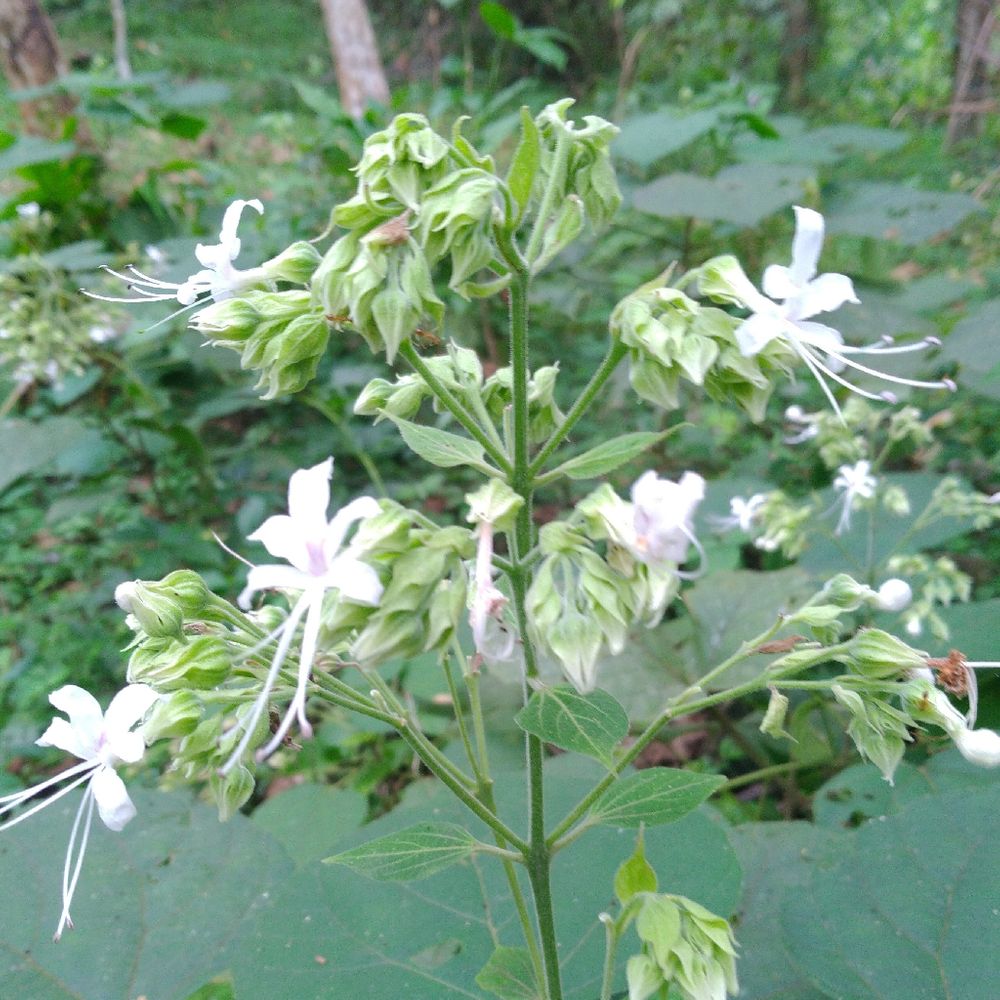Hill Glory Bower
(Clerodendrum infortunatum)

Description
Clerodendrum infortunatum, the hill glory bower, is a perennial shrub belonging to the family Lamiaceae, also sometimes classified under Verbenaceae. It is the type species among ~150 species of Clerodendrum. It is one of the most well-known natural health remedies in traditional practices and siddha medicine. The species is native to tropical regions of Asia including Bangladesh, India, Myanmar, Pakistan, Thailand, Malaysia, the Andaman Islands, and Sri Lanka. Clerodendrum infortunatum is a flowering shrub or small tree, and is so named because of its rather ugly leaf. The stem is eresct, 0.5–4 m (1.6–13.1 ft) high, with no branches and produce circular leaves with 15 cm (5.9 in) diameter. Leaves are simple, opposite; both surfaces sparsely villous-pubescent, elliptic, broadly elliptic, ovate or elongate ovate, 3.5–20 cm (1.4–7.9 in) wide, 6–25 cm (2.4–9.8 in) long, dentate, inflorescence in terminal, peduncled, few-flowered cyme; flowers white with purplish pink or dull-purple throat, pubescent. Fruit berry, globose, turned bluish-black or black when ripe, enclosed in the red accrescent fruiting-calyx. The stem is hollow and the leaves are 15–20 cm (5.9–7.9 in) long, borne in whorls of four on very short petioles. The inflorescence is huge, consisting of many tubular snow white flowers in a terminal cluster up to 0.6 m (2 ft) long. The tubes of the flowers are about 10 cm (3.9 in) long and droop downward, and the expanded corollas are about 5 cm (2.0 in) across. The fruits are attractive dark metallic blue drupes, about 1 cm (0.4 in) in diameter. Fruit usually with four dry nutlets and the seeds may be with or without endosperm. It flowers from April to August.
Taxonomic tree:







